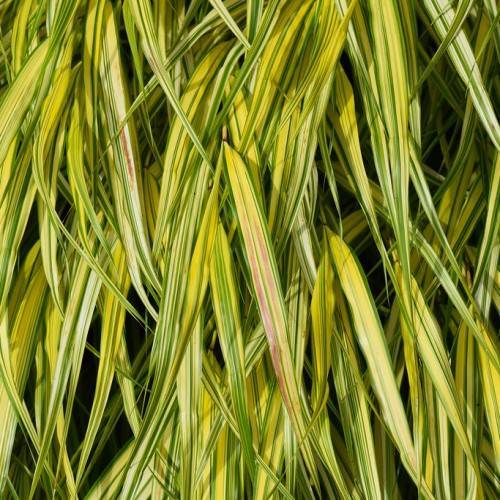
Japanese forest grass
Hakonechloa macra 'Stripe It Rich'
Cycle:
Perennial
Watering:
Average
Hardiness Zone:
5 - 9
Flowers:
Flowers
Sun:
Part shade
Leaf:
Yes
Growth Rate:
Low
Maintenance:
Low
Drought Tolerant:
Yes
Salt Tolerant:
Yes
Care Level:
Moderate
watering
Water every few days, making sure the soil is consistently moist (but not soggy). It should only need to be watered when the top 2 inches of the soil are dry. Aim to water it thoroughly until the water flows from the bottom of the pot. Japanese forest grass does not need to be watered more than once a week. Avoid overwatering, since this can lead to root rot and other issues.
sunlight
Japanese forest grass (Hakonechloa macra 'Stripe It Rich') prefers to grow in rich, moist soil in a partially shaded spot where it receives morning sunlight and shade in the afternoon. To achieve optimal growth, the plant should receive at least 4 hours of direct sunlight each day, preferably in the morning, but can tolerate more if the afternoon hours are shaded. While light shade to dappled shade is preferred for Japanese forest grass, too much shade can lead to leggy, floppy growth. In hot climates, a bit of afternoon shade can also help the grass thrive.
pruning
For Japanese forest grass (Hakonechloa macra 'Stripe It Rich'), pruning should be done twice a year. Prune lightly in the spring and then again in the late summer or early fall. To spring prune, use sharp pruners and trim every blade back by about 1/3 leaving tufts of 4 to 6 blades at the base of the clump. This will help encourage a fuller fuller and denser growth. To late summer or early fall prune, cut any dead or damaged blades, and then lightly trim all the blades so that the clump is no more than 1/2 its original size. This will get rid of old, declining foliage and promote a more upright growth habit.
